Bouley-Creasy Fund
The Department of Earth and Climate Sciences (formerly Geology) is pleased to announce the availability of funds in support of senior thesis research.
The Bouley-Creasy Fund is established with gifts from the Bouley and Creasy families and family, friends, classmates, and former students of the Bates Earth and Climate Sciences/Geology Department in memory of longtime Geology Professor John Creasy, and his friend and Bates Geology Alum Bruce Bouley, ’69.
For more information please contact the chair of the Department of Earth and Climate Sciences.
Bruce Bouley and John Creasy
Bruce A. Bouley ‘69 was born in Worcester, Massachusetts in 1947, and died in Golden, Colorado in 2001, at the age of 54. A well-respected geologist, Bruce attributed much of his success to the Bates experience. His decision to attend Bates was based largely on the school’s strong liberal arts tradition; after graduation, he became a lifelong advocate for his alma mater.
Professor Emeritus of Geology John W. Creasy was born in Honesdale, Pennsylvania, in 1946, and died in Freeport, Maine in 2017, at the age of 71. Professor Creasy earned a B.S. degree with high distinction in geology from Colorado State University in 1967 and a Ph.D. from Harvard University in 1974. He taught briefly at Middlebury College before joining the Bates faculty in 1975, from which he retired in 2014 after 39 years of teaching.
Bruce met John on a return to campus in the mid-1970s for a quick visit to the geology department. An immediate rapport developed, with John making a trek later that year to visit Bruce in Harborside, Maine, where Bruce was carrying out Ph.D. fieldwork. A shared mutual interest in field-based bedrock geology developed and during summers in the early 1980s, John began working for Bruce as a consultant to Callahan Mining Corporation out of Scottsdale, Arizona. Bruce and John held dearly to Short Term and the senior thesis program in geology, both of which emphasized extensive field and lab work for students.
Application Deadlines: April 1 and Oct 15
The Bouley-Creasy Fund supports senior thesis research in field, laboratory, or modeling based projects in earth and climate sciences. Support may cover expenses associated with travel, field or laboratory work, geochemical and geochronological analyses, software costs for modeling, and others costs associated with thesis research.
Interested EACS juniors and/or seniors should submit a formal proposal to the Chair of the Department of EACS by the deadlines specified.
Proposal Deadlines: April 1 and October 15. Students needing financial support for thesis work should submit a 2-page proposal to the Chair of EACS on the deadline specified. The proposal includes a brief description of the project with a statement of purpose and objectives, the planned tasks/activities for which funding is sought, and the anticipated budget. Students need to ask the thesis advisor to submit a brief recommendation to the Chair of EACS on the deadline specified. The department faculty will review the proposals and determine the awards.
Grant awards generally range from $100 to $500, depending on the quality and needs of the specific research projects. There are no restrictions on the number of recipients each year.
Financial Responsibility
If for any reason the recipient of the grant is unable to fulfill their project obligations as stated in their proposal, the student is responsible to repay the grant money awarded. If the College has purchased airline tickets that the student does not use, the student is responsible to repay the College for the price of the ticket. If the project is already underway, then the amount of payment back will be determined by Edili Lopez in the Dean of the Faculty’s Office.
Highlights of Student Projects Funded
Mitchel Soederberg (EACS, 2025)
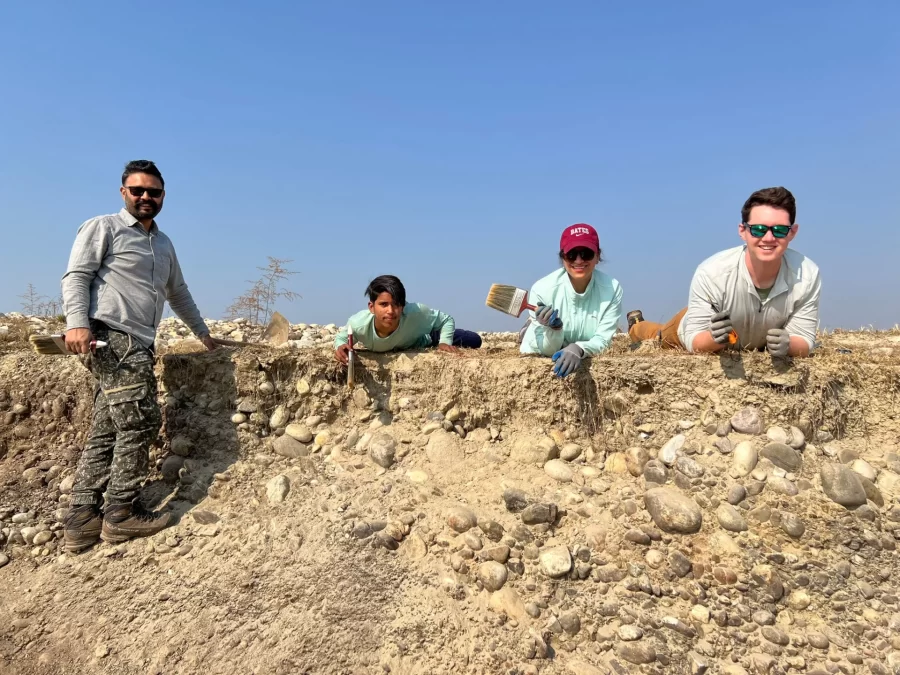
Mitchel Soederberg worked with Assistant Professor Shreya Arora on a paleoseismic trench investigation at the Himalayan Frontal Thrust in northern India. The work took place over a week in late December 2023 near the city of Dehradun, and Mitchel plans to analyze the trench data for his senior thesis in the 2024-25 academic year. The goal is to better understand the boundary of an earthquake event that occured in 1803, as well as reinforce local strain rate (plate velocity) calculations. In the field, Mitchel, Shreya, Drew Cochran ’24, and others interpreted potential fault surfaces, estimated their displacement, and gathered sediment samples for dating. The data collected in this investigation will complement several previous investigations along the Himalayan Front.
Cal Schrupp (Geology, 2024)
Cal Schrupp worked with Visiting Assistant Professor Zach Murguia Burton to create two large scale maps of a unique quartz pebble conglomerate rock (Srqpc) unit and the surrounding 1000 sqft. area located on Mt. Carlo in Riley, Maine. These maps, one bedrock map and the other an exposed outcrop map, and the confident identification of these rocks required to create them, would not have been possible without help from the Bouley Creasy Fund which funded the creation of six thin section slides. These slides were analyzed using transmitted light microscopy in the Mineralogy lab at Bates. This Srqpc unit had never before been studied in thin sections and the analysis of the composition of its clasts and matrix at a microscopic level provided valuable insights into its formational relationship with the surrounding interbedded units and its original tectonic deposition.
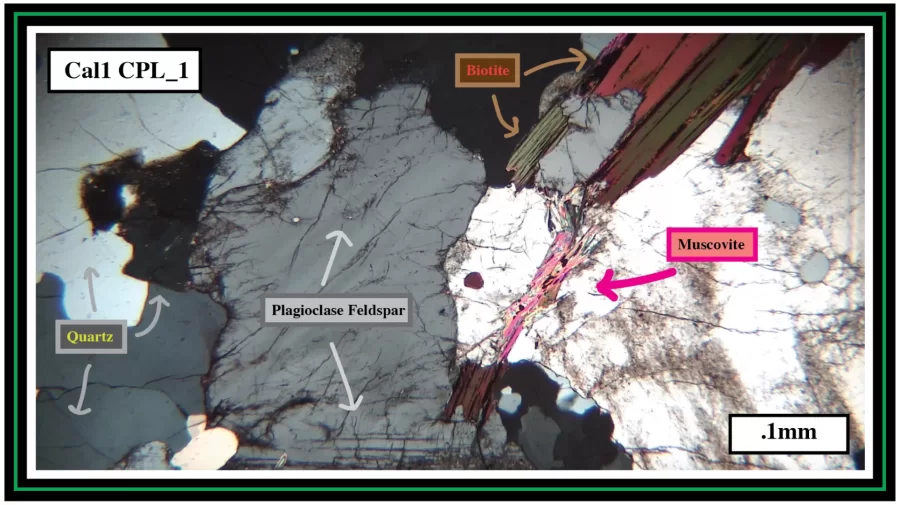
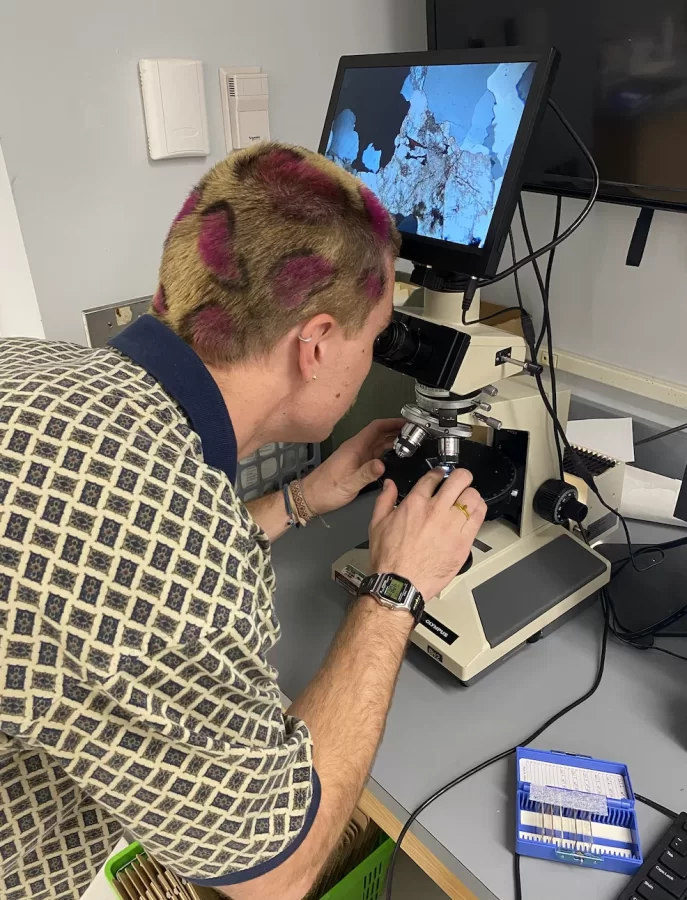
Cal Schrupp (Geology, 2024) studying a thin section created from a Mt Carlo outcrop. These thin sections provieded valuable insite into the composition of the clasts and matrix of the outcrop.
Alana Margerum (Geology, 2023)
Alana Margerum worked with Visiting Assistant Professor Raquel Portes to investigate the effects of plant succession on soil chemical weathering in Southeast Alaska’s post-glacial landscapes for her honors senior thesis titled “Plant Succession and Soil Chemical Weathering on Post-Glacial Landscapes, SE Alaska.” The Bouley-Creasy award provided funding for Alana to do extensive fieldwork in the Herbert Glacier Valley, Juneau, in 2022. She collected soil samples, described vegetation, and used dendrochronology to determine the age of moraines and soils. Back in the lab, Alana performed geochemical analysis to determine chemical weathering indices and correlated them with soil age. Her results revealed rapid soil development and a climax community established within just 250 years. Despite this swift transition, chemical weathering rates remained consistent, potentially influenced by plant biogeochemical cycling, with pedogenic iron oxides ratios as a key indicator of early-stage weathering.
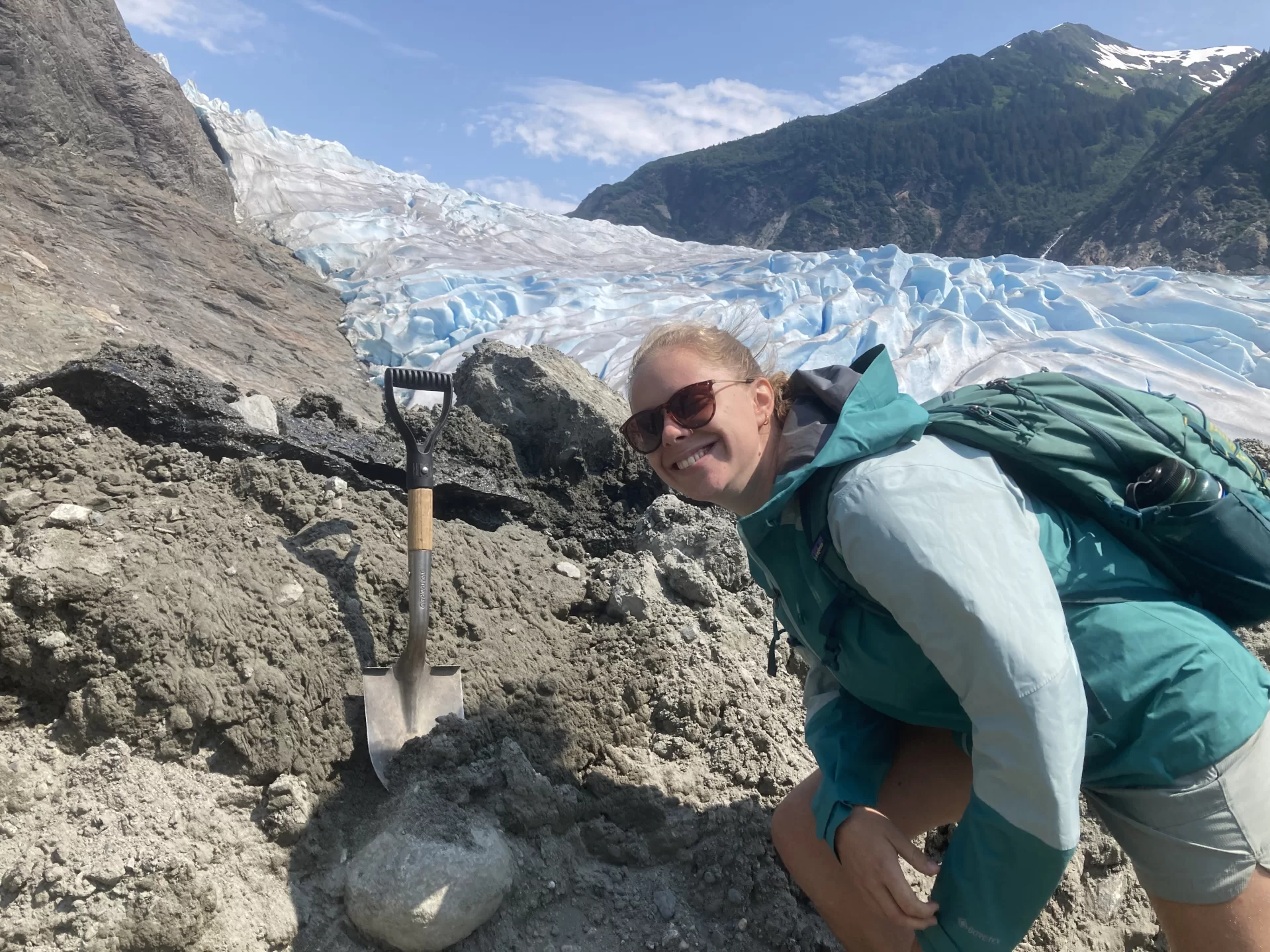
Alana Margerum (Geology, 2023) studying soil development on a recently exposed moraine in the Herbert Glacier Valley, Juneau AK.
Eli Gundersen (Geology, 2023)
Eli Gundersen worked with Visiting Assistant Professor Raquel Portes to study the impact of whole-tree harvesting on soil erosion in a watershed for his senior thesis titled “The Application of 239+240Pu to Quantify Soil Erosion and Deposition Rates in a Deforested Watershed in the Hubbard Brook Experimental Forest.” The Bouley-Creasy award provided funding for Eli to do extensive fieldwork in the Hubbard Brook Experimental Forest, in 2022. Eli found the Pu isotopes were mobilized slightly at depth due to lateral podzolization, characterized by the lateral movement of water, Fe, Al, and organic matter in the subsurface. Yet, even with this minor shift, Pu isotopes remain as reliable erosion tracers in this environment. The research highlighted considerable erosion rates following deforestation, and distinct differences in soil redistribution between the control and deforested watersheds. Gundersen’s work emphasizes the significance of comprehending the dynamics of soil formation processes and their influence on erosion tracers when evaluating soil redistribution rates.
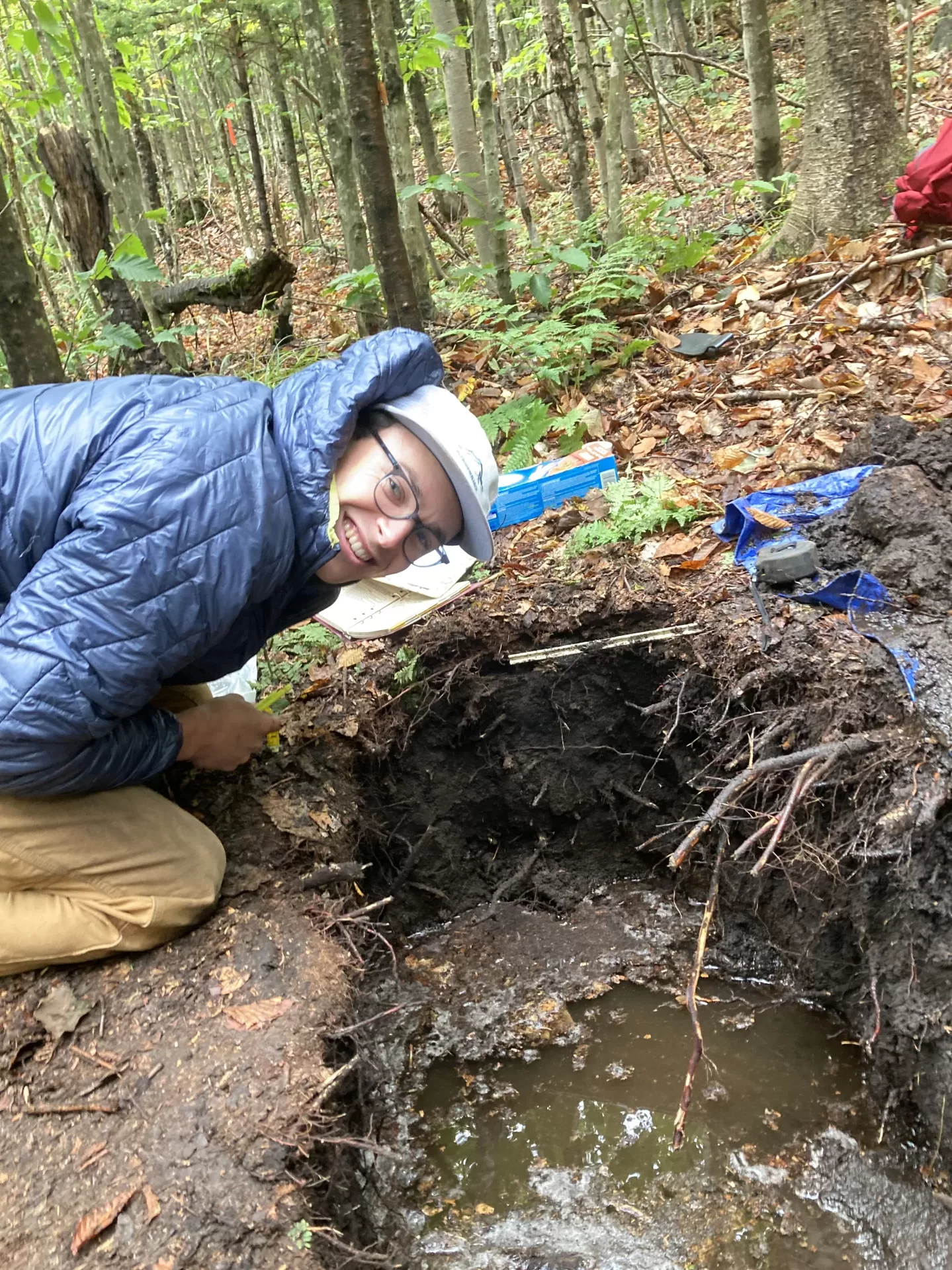
Eli Gundersen (Geology 2023) studying the soil-groundwater interface at Hubbard Brook Experimental Forest, in NH.
Tristan Depew (Geology, 2023)
Tristan Depew worked with Assistant Professor Shreya Arora to study the timing of landslides in Maine for his thesis titled Investigating the relationship between past seismic activity and weather-related events with landslides in Southern Maine, U.S.A. Maine has not experienced a large-magnitude earthquake since the advent of instrumental seismic monitoring. It has recorded approximately 507 microseismic events indicating the presence of tectonic stresses. Tristan worked on landslides in Maine which are prominent geomorphic expressions of slope failure and may be triggered by seismic activity, climate change, and/or changes in land use. The Bouley-Creasy Fund was used to support fieldwork and to collect radiocarbon samples from past landslides. Tristan, in collaboration with Dr. Lindsay Spigel of the Maine Geological Survey, discovered that more than 16 landslides occurred during the same time period, between 500-700 cal yrs BP. The source of the trigger is not yet known with certainty and is currently under investigation.
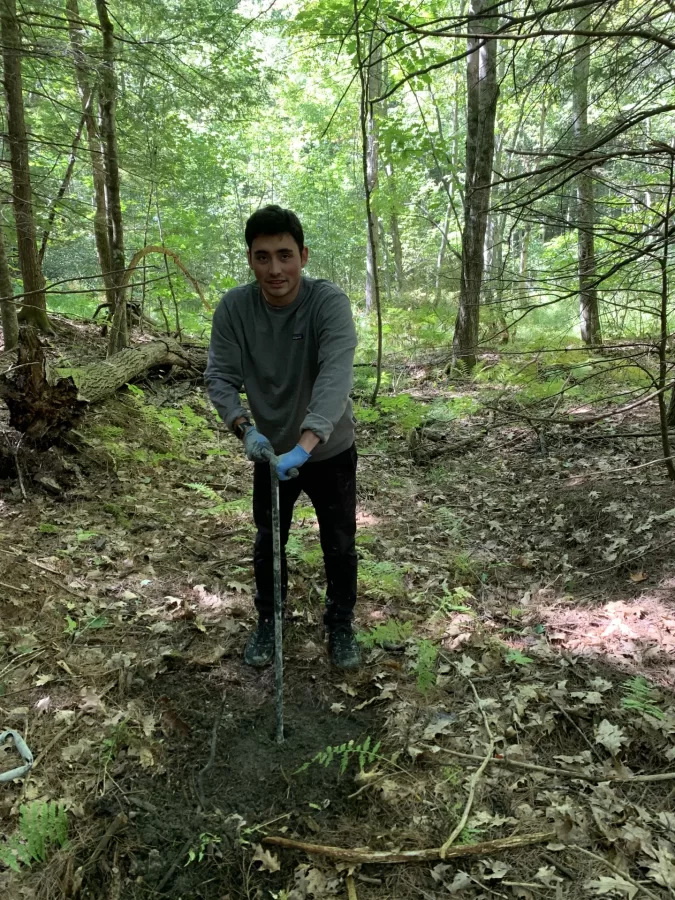
Tristan Depew (Geology, 2023) coring an ancient landslide deposit in search of material for radiocarbon dating.
For more information please contact the chair of the Department of Earth and Climate Sciences.